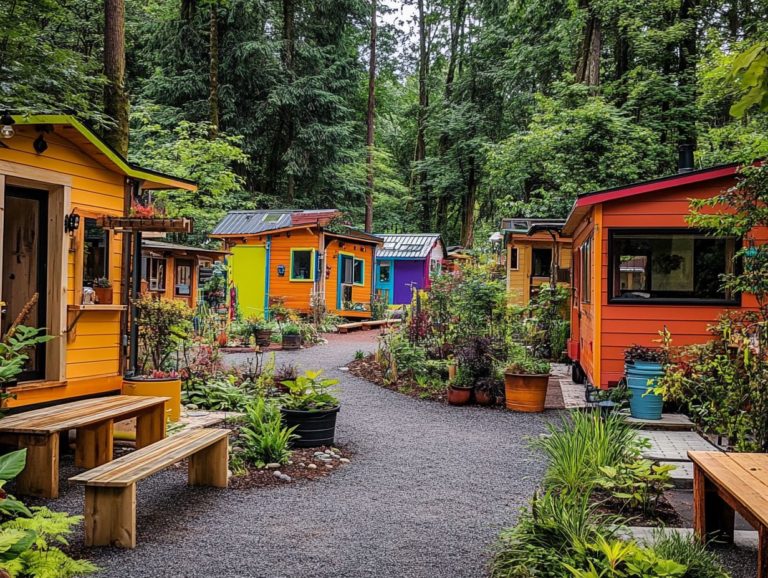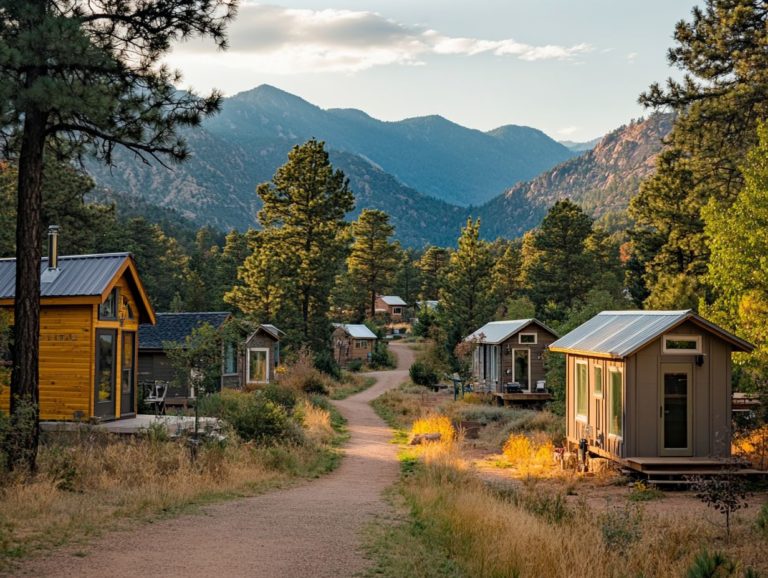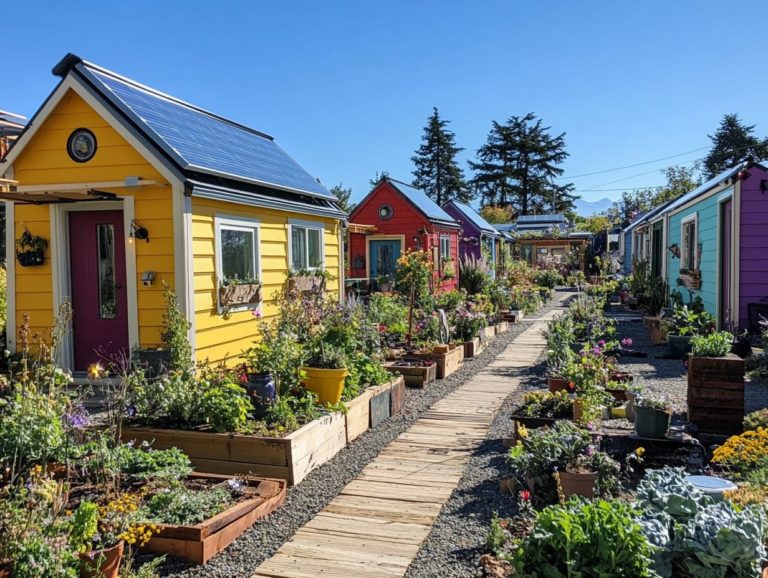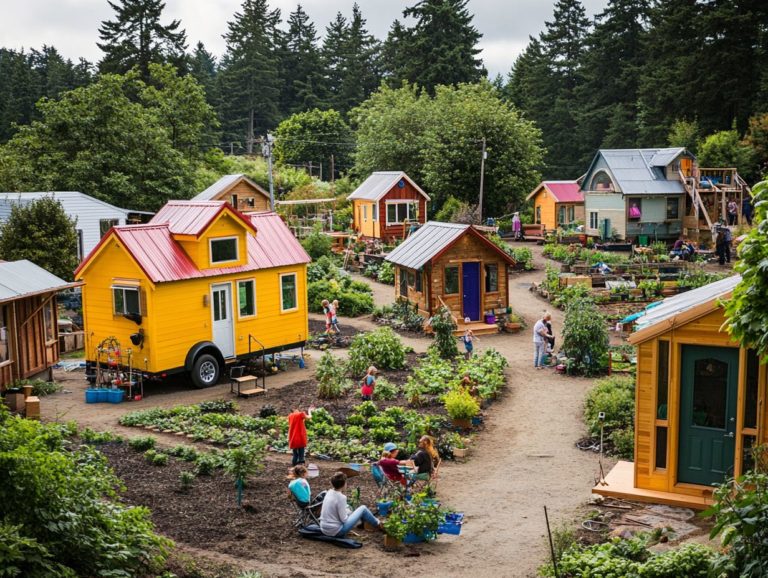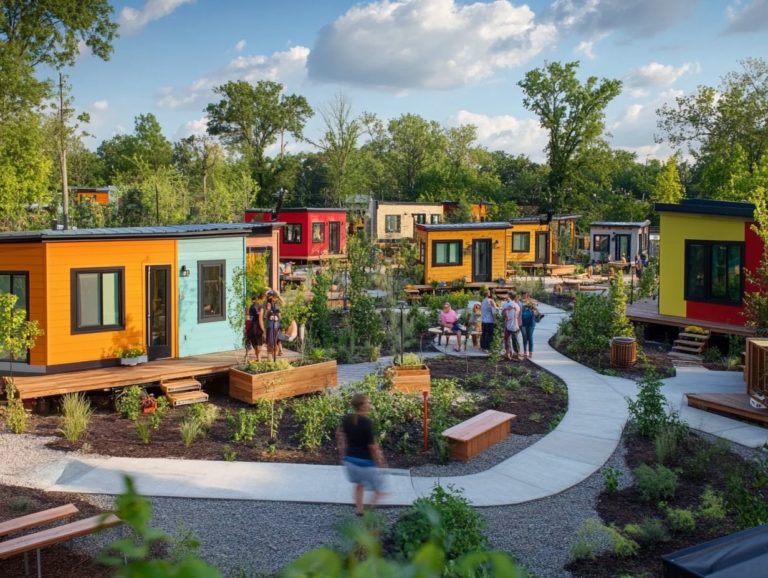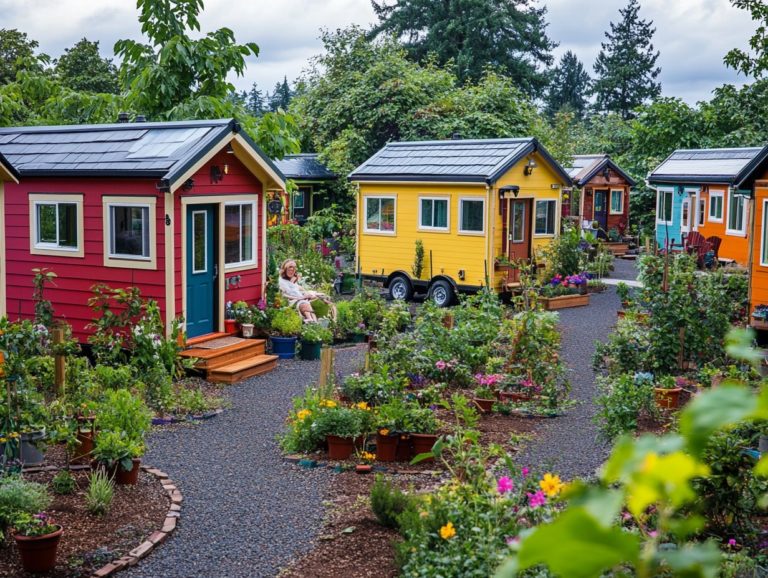Building Relationships in Tiny House Communities
Tiny house communities are not just clusters of small homes; they embody a distinctive lifestyle that champions minimalism, sustainability, and meaningful social connections.
Consider the many benefits of living in such tiny home communities. You’ll find support and shared resources at your fingertips, along with unique relationships that can blossom among neighbors. It’s also important to consider challenges like privacy concerns and varying lifestyles that may arise.
Embracing practical tips for nurturing tiny house relationships can ensure your tiny house experience remains fulfilling and enriching. Dive into the exciting details to uncover how you can foster a genuine sense of belonging within a compact yet vibrant tiny home community!
Contents [hide]
- Key Takeaways:
- Benefits of Living in a Tiny House Community
- Building Relationships in a Tiny House Community
- Challenges of Building Relationships in a Tiny House Community
- Tips for Nurturing Relationships in a Tiny House Community
- Frequently Asked Questions
- What are some benefits of building relationships in tiny house communities?
- How can I connect with others in a tiny house community?
- What are some potential challenges in building relationships in tiny house communities?
- How can building relationships in tiny house communities benefit the environment?
- What are some ways to maintain a sense of privacy in a tiny house community?
- How can building relationships in tiny house communities contribute to personal growth?
Key Takeaways:
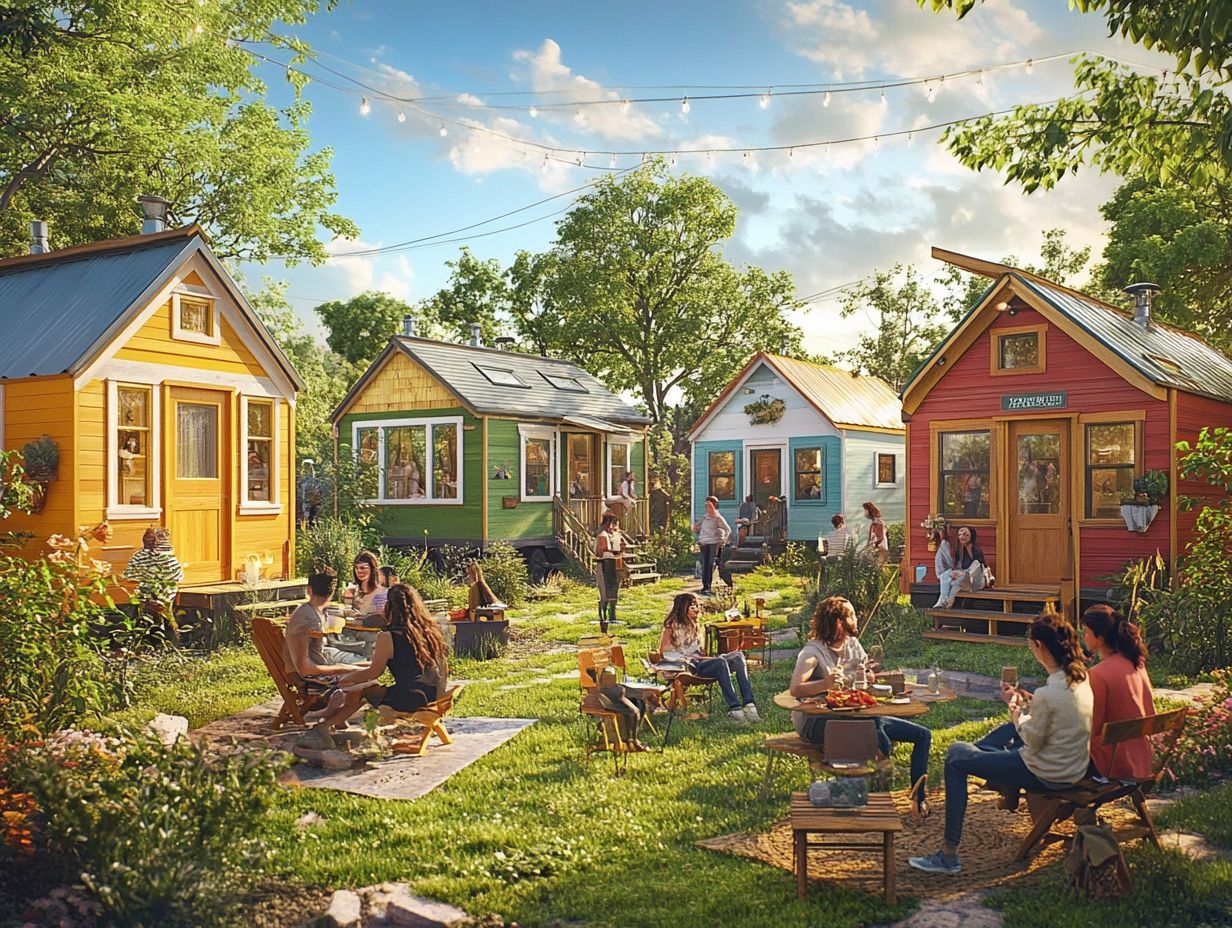
- Living in a tiny house community offers strong support and shared resources, making it easier to build relationships and create a tight-knit community.
- Effective communication and conflict resolution are essential for building and maintaining relationships in a tiny home community.
- Nurturing relationships in a tiny home community requires a strong culture and engaging community events to bring residents together and foster a sense of belonging.
What are Tiny House Communities?
Tiny home communities represent a visionary approach to living, offering an eco-friendly lifestyle that encourages downsizing into charming tiny homes. These communities foster a unique sense of belonging through shared values and a commitment to communal living. Here, sustainability takes center stage, allowing you to experience financial freedom, which is the ability to manage your money without stress, while embracing a simpler life free from the burdens of traditional housing.
By joining the tiny house movement, you’re tapping into a growing trend that values minimalism, positive environmental impact, and the culture of tiny house communities that fosters strong interpersonal connections among residents.
The architectural designs in these communities often showcase innovative uses of repurposed materials and technologies that use less energy, enhancing their environmental appeal. You’ll find that residents typically share amenities like community gardens, workshops, and shared laundry facilities, creating a rich tapestry of collaboration and support.
This interconnected lifestyle not only helps reduce ecological footprints, which is the impact of your lifestyle on the environment, but also nurtures a vibrant social fabric, allowing for shared experiences and resources.
As more people seek alternatives to conventional living arrangements, tiny house communities stand out as a model for addressing housing shortages while promoting sustainable practices. They not only align affordability with environmental stewardship but also foster connections, as highlighted by tiny house communities: building new friendships, leading the way toward a brighter, more sustainable living-focused future.
Benefits of Living in a Tiny House Community
Residing in a tiny house community presents you with many advantages. You’ll experience financial freedom, a reduced environmental footprint, and the opportunity to forge deeper connections with fellow residents.
These tiny home communities flourish on the principles of shared resources and collaborative projects, fostering a sense of belonging that enriches your daily life.
Community Support and Shared Resources
Community support in tiny home communities shines through the shared resources that foster collaboration and create a genuine sense of belonging among residents, enhancing tiny house relationships.
These communal spaces do more than just provide fresh produce; they become vibrant gathering spots where neighbors bond over the joys of planting and harvesting together in their community gardens. Shared laundry facilities not only help reduce utility costs but also encourage interactions during laundry time, strengthening those connections even further.
Energy efficiency gets a significant boost as residents unite in their commitment to sustainable practices and share tools for upkeep in their tiny house community. By optimizing these shared resources, tiny home communities nurture an atmosphere of cooperation, sustainability, and camaraderie. For those interested in finding the perfect fit, understanding how to choose the right tiny house community can transform close living quarters into a truly fulfilling experience.
Building Relationships in a Tiny House Community
Building relationships within a tiny home community is crucial for cultivating emotional support and establishing cohesive environments where residents can flourish together through collaboration and shared experiences.
By nurturing these connections, individuals can create a vibrant community that gives the power to everyone to thrive.
Communication and Conflict Resolution
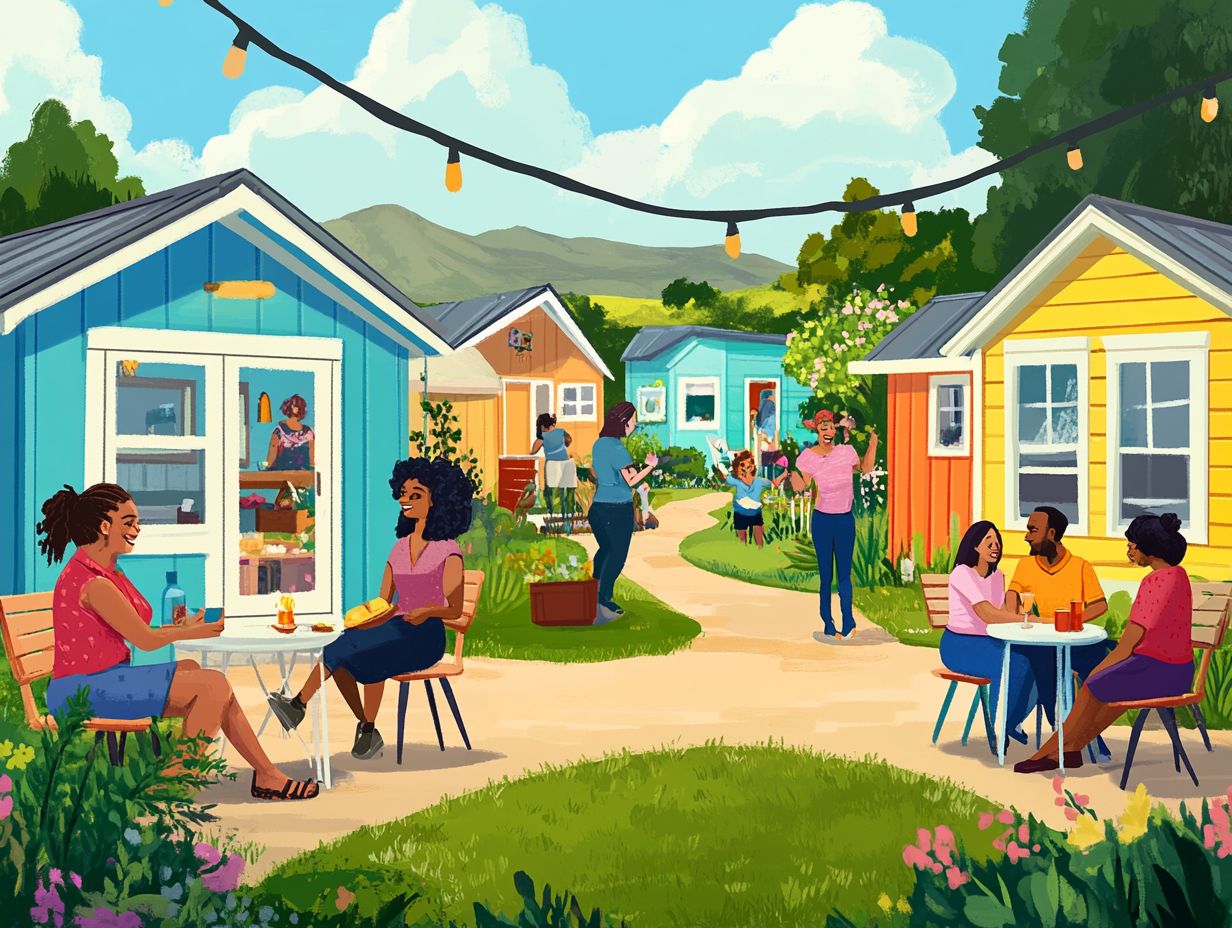
Effective communication plays a pivotal role in tiny home communities, ensuring harmonious living and resolving conflicts that may arise from differing lifestyles and values among residents.
This means you need to actively listen to one another and cultivate an environment where every voice is valued, especially in the context of shared sustainability and community values.
You will discover that organizing regular community meetings can be incredibly beneficial, providing everyone with the chance to express their concerns and share their experiences.
Create a clear way to handle complaints. This builds trust and respect among residents. By aligning on shared values like environmental sustainability and minimalism, you can create a strong foundation for understanding, collaboration, and ultimately, peaceful coexistence within the tiny home community. For more insights, check out life in a tiny house community.
Collaboration on Community Projects
Collaboration on community projects shows the essence of tiny home living, where you and your neighbors come together to design and implement initiatives that enhance your shared space and strengthen your communal bonds.
These collaborative efforts can take many forms, like cultivating community gardens that not only beautify your neighborhood but also promote sustainable practices and foster food sharing.
Beyond gardening, organizing events such as skill-sharing workshops or seasonal festivals nurtures a sense of belonging and encourages you to tap into shared resources. Don’t miss the chance to create lasting friendships.
By engaging in these projects, you not only enhance your immediate environment but also forge lasting friendships, creating a supportive network that enriches your tiny home experience. This gives the power to everyone involved to achieve collective goals, turning your community into a thriving hub of collaboration and connection, especially when considering living off-grid in tiny house communities.
Challenges of Building Relationships in a Tiny House Community
Building relationships within a tiny home community can be incredibly rewarding, yet it also comes with its share of challenges.
You will discover the balance between the joy of camaraderie and the necessity of preserving your personal privacy in a tiny home community.
Privacy and Personal Space
Privacy and personal space can pose notable challenges in tiny home communities, where limited physical space often forces you to juggle your need for solitude with the emotional support of your neighbors.
In these close-knit environments, it s essential for you to devise strategies that respect both your personal boundaries and the communal spirit that characterizes tiny home living.
Simple tactics, like establishing designated quiet hours, using soundproofing materials (such as foam panels or curtains), or even creating private outdoor spaces such as fences or garden nooks, can significantly enhance your solitude.
Participating in community meetings or organized activities allows you to forge deeper connections while still preserving your personal retreat in the tight-knit community.
By thoughtfully balancing these factors, you can cultivate an atmosphere that nurtures both your privacy and communal harmony, resulting in a vibrant yet respectful living experience.
Join your neighbors today and start building those important connections!
Differences in Lifestyle and Values
Differences in lifestyle and values can easily lead to misunderstandings within tiny house communities. Effective conflict resolution is crucial for maintaining harmony among residents.
In these close-knit environments, where space is limited and interactions are frequent, varying personal habits, ideals about sustainability, and preferences for communal versus private living can create tension. You might find yourself at odds over issues like noise levels, shared responsibilities, or the use of communal resources.
To navigate this diversity in tiny home communities, consider practical solutions such as regular community meetings and workshops that focus on communication and compromise. This allows everyone to express their needs openly, fostering a culture of shared values and emotional support. By building a shared understanding and establishing clear guidelines around communal living, you can create an inclusive atmosphere, ensuring that all residents feel respected and valued in the cozy quarters of their tiny home. Additionally, understanding the importance of sustainability in tiny house communities can further enhance the living experience for everyone.
Tips for Nurturing Relationships in a Tiny House Community
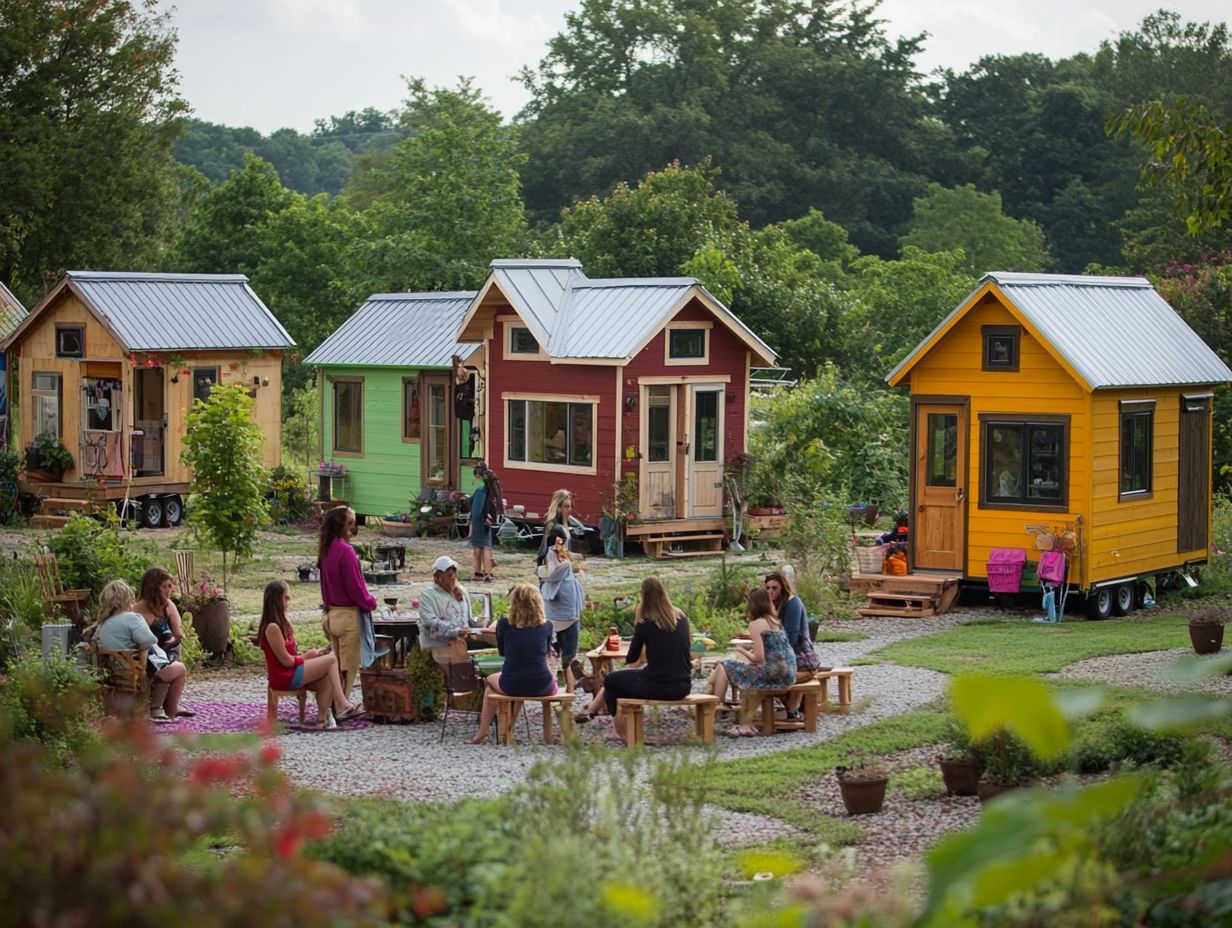
Nurturing relationships within a tiny house community is essential for fostering a supportive environment.
Consider cultivating a strong community spirit and organizing engaging social events that deepen connections among residents. These strategies significantly enhance the sense of belonging and camaraderie. If you’re interested in finding affordable tiny house communities, these elements can make your community truly thrive.
Creating a Strong Community Culture
Creating a strong community culture within a tiny house community is vital for fostering shared values and inspiring collaborative projects that elevate the living experience for everyone involved.
By bringing together individuals from diverse backgrounds, you’ll witness a vibrant culture unfold—one that truly celebrates inclusivity and creativity. This interconnectedness motivates residents to engage in activities like community gardening, shared workshops, and local events. For those new to these settings, exploring tiny house communities can provide valuable insights. These endeavors cultivate friendships and fortify the bonds among neighbors.
When residents come together to tackle shared challenges, such as sustainability initiatives, which aim at reducing waste and promoting eco-friendly practices, or cooperative maintenance, they foster a deeper sense of trust and commitment. Ultimately, these collaborative efforts contribute to a sense of belonging, transforming the tiny house community into more than just a place to live; it becomes a supportive haven that thrives on mutual respect and camaraderie.
Organizing Social Events and Activities
Organizing exciting social events is a fantastic way to nurture relationships within your tiny house community, offering residents ample opportunities to connect and engage in shared experiences.
Imagine potluck dinners that spark culinary creativity or workshop sessions where you and your neighbors can showcase your unique skills. These gatherings foster a real sense of belonging and collaboration. If you’re considering creating a space for such activities, learn how to start a tiny house community to enhance personal connections and strengthen the bonds among everyone through activities like community gardening days and movie nights under the stars.
Seasonal celebrations, such as harvest festivals and holiday markets, not only highlight local talent but also create lasting memories. By involving everyone in the planning and execution, your tiny house community fosters inclusivity, ultimately promoting a vibrant and supportive environment where individuals can thrive together.
Frequently Asked Questions
-
What are some benefits of building relationships in tiny house communities?
Building relationships in tiny house communities creates a sense of support and belonging. It also allows for resource sharing and collaboration, making living in a tiny house more sustainable and affordable.
How can I connect with others in a tiny house community?
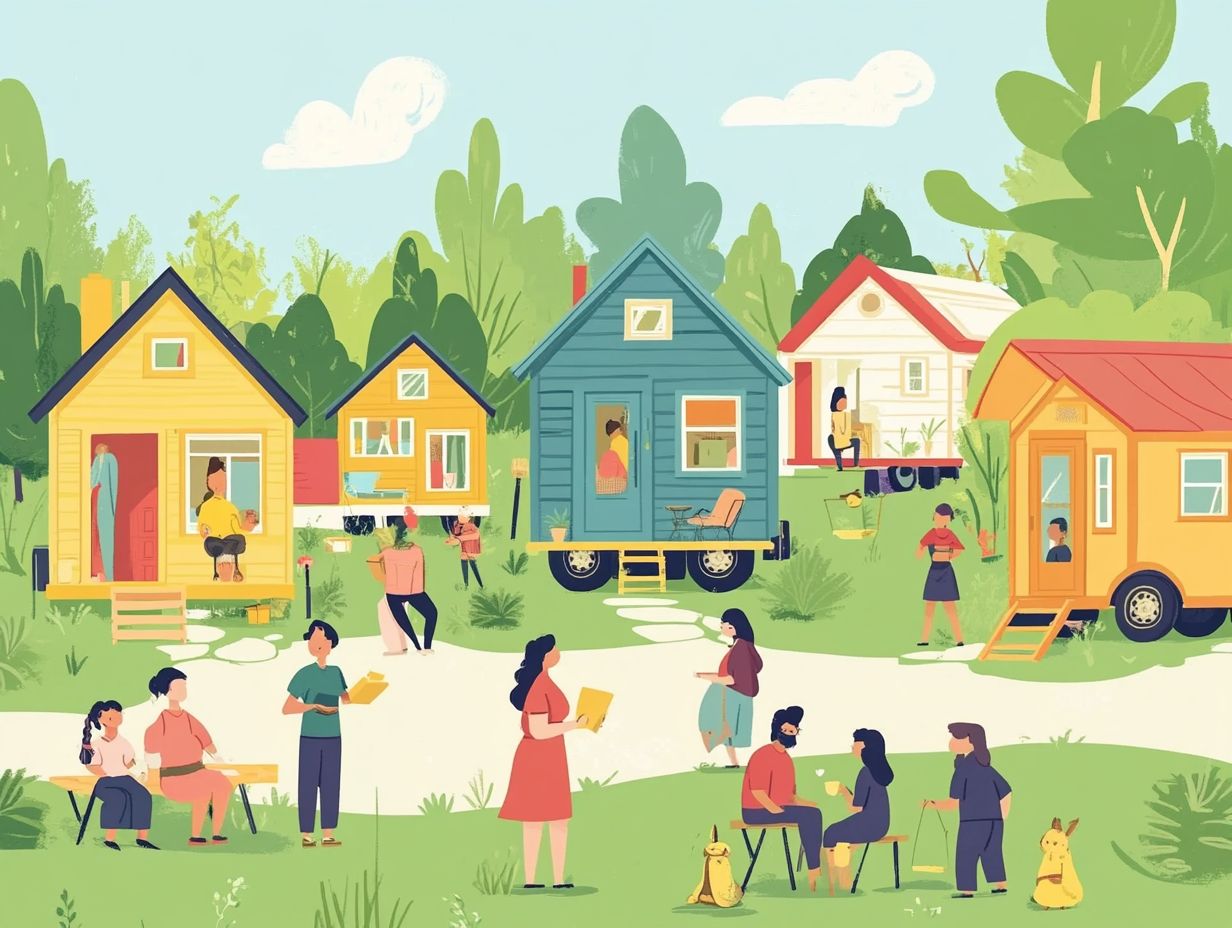
Connect with others by attending community events or joining online groups for tiny house residents. Reach out to your neighbors and introduce yourself.
What are some potential challenges in building relationships in tiny house communities?
Challenges include differences in lifestyle, limited privacy, and conflicts over shared resources. Open communication and respect can help you navigate these issues.
How can building relationships in tiny house communities benefit the environment?
Living in a tiny house and connecting with others can lower your environmental impact. Sharing resources reduces waste and promotes sustainable living practices.
What are some ways to maintain a sense of privacy in a tiny house community?
Even in smaller spaces, you can find ways to keep your privacy. Set boundaries with neighbors, use common areas at different times, and create personal spaces in your tiny house.
How can building relationships in tiny house communities contribute to personal growth?
Being close to others in a tiny house community teaches you to live together harmoniously. This experience boosts your communication skills, empathy, and understanding.

